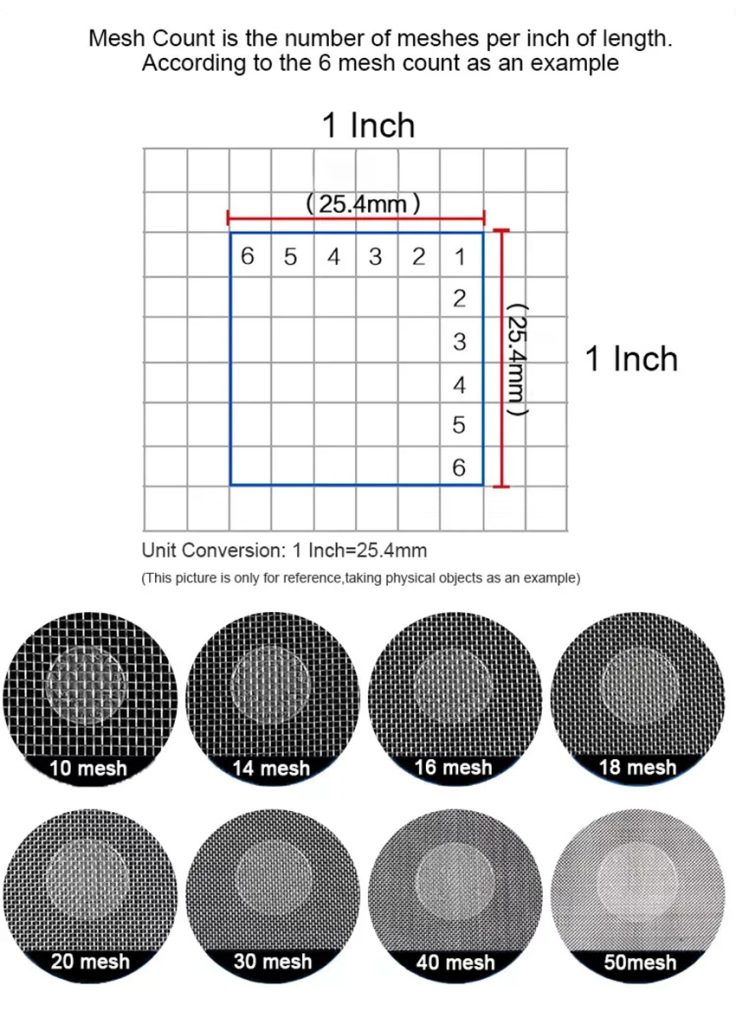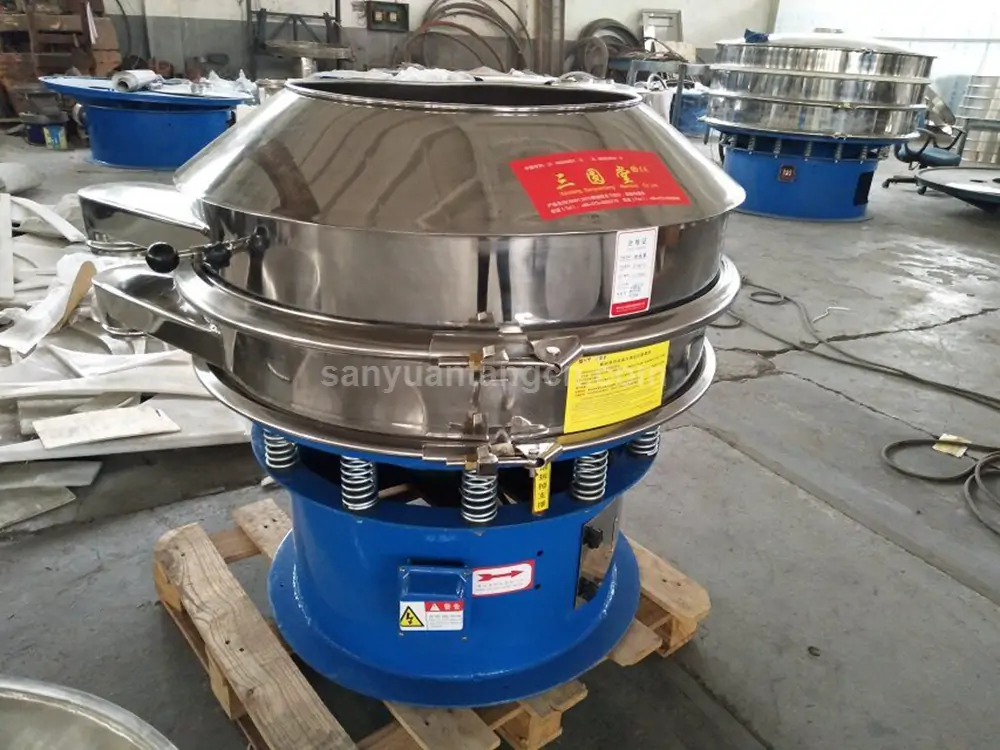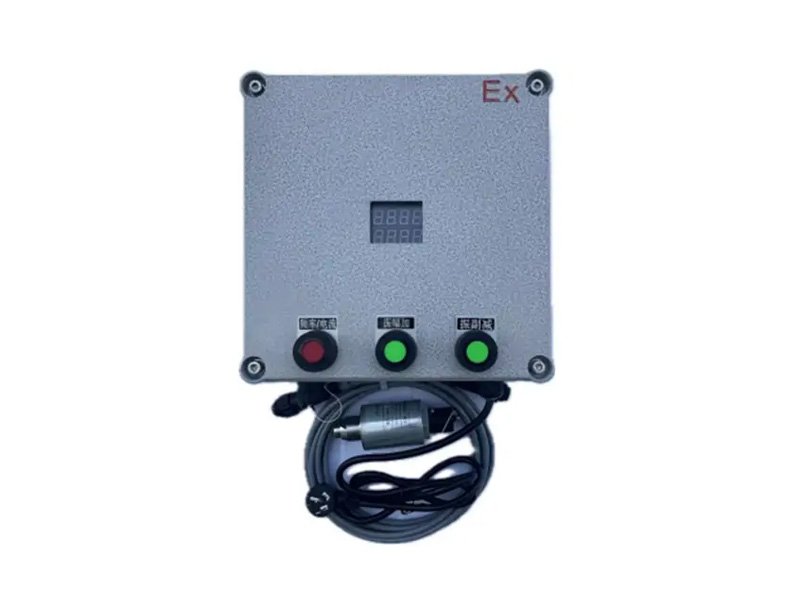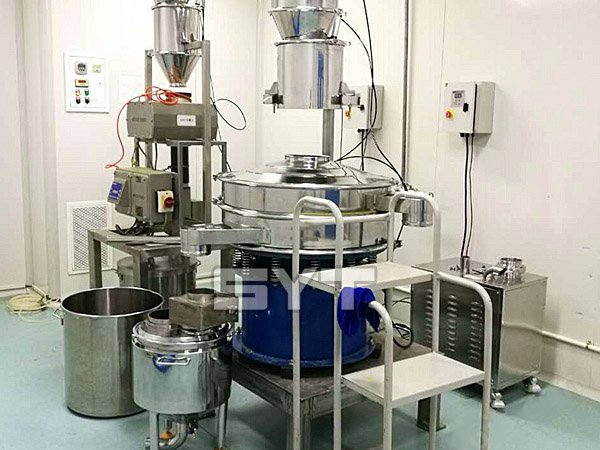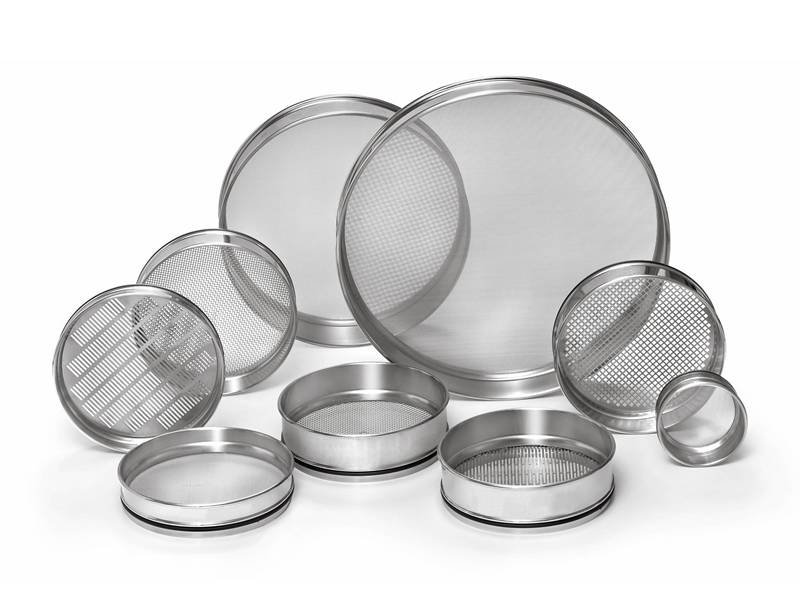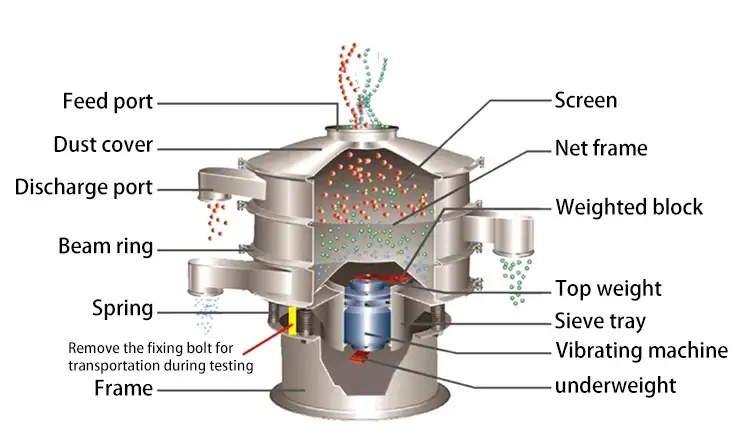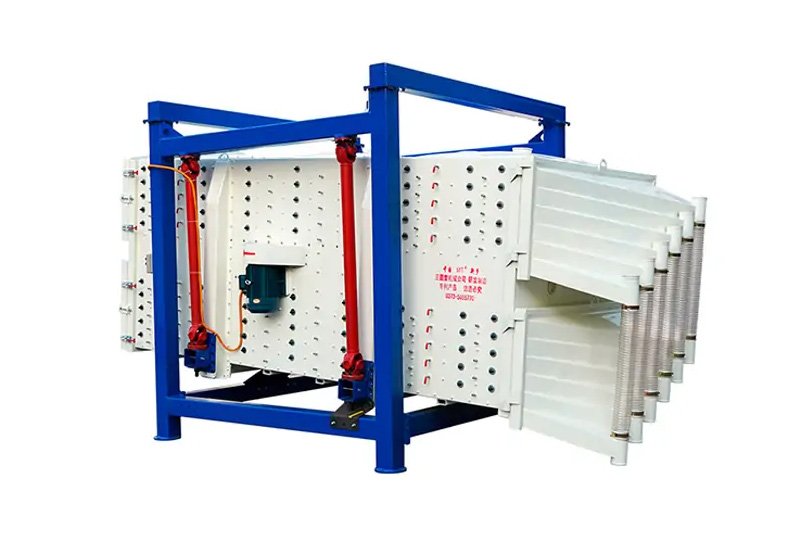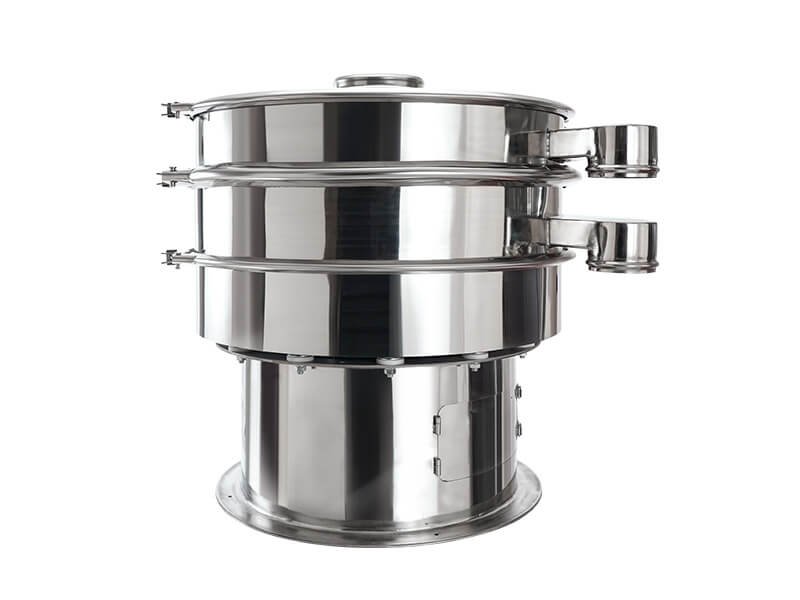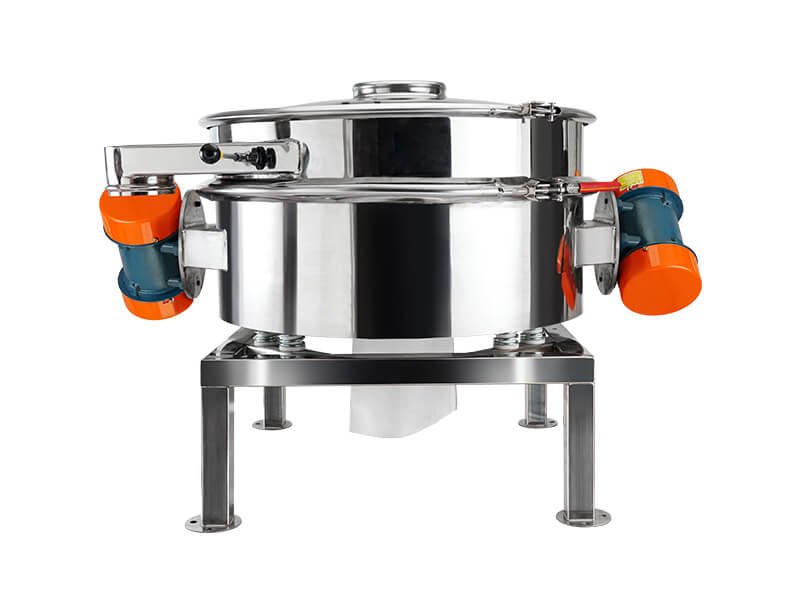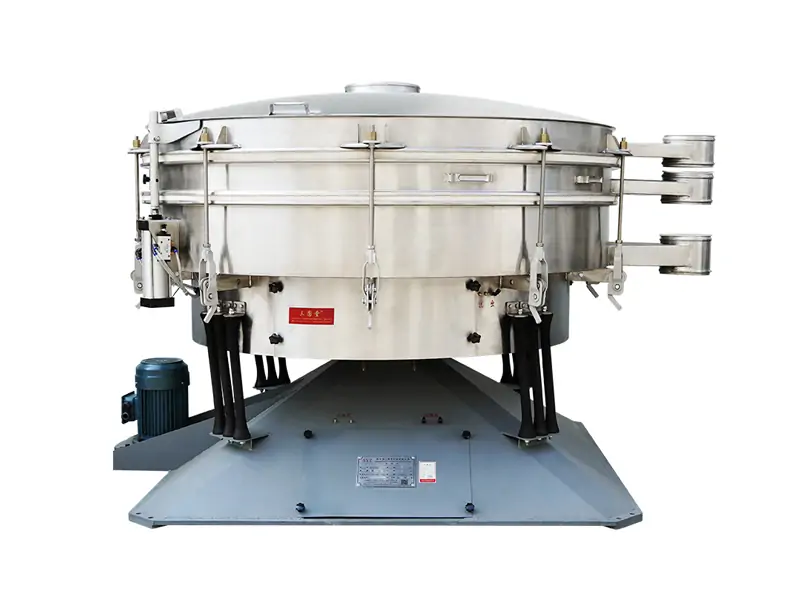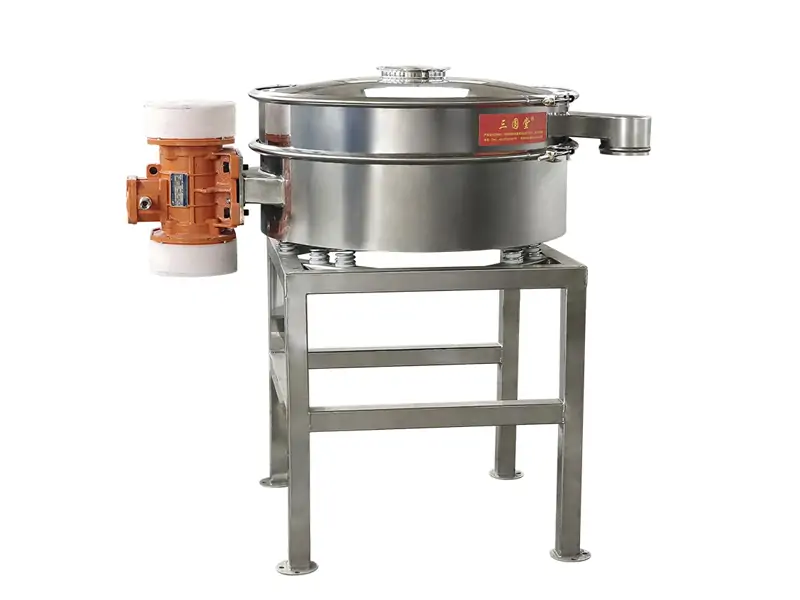What is the vibrating screen capacity
The vibrating screen capacity refers to the amount of material that a vibrating screen can process or screen per unit time, and is often used to measure the processing capacity and screening efficiency of the equipment. The capacity of a vibrating screen is usually expressed in tons per hour (tph) or cubic meters per hour (m³/h), depending on the unit of measurement used.

How to increase the vibrating screen capacity?
In the actual application of vibrating screens, many customers fail to fully optimize the equipment, resulting in the output of the vibrating screen failing to reach the optimal level. To help you improve the production efficiency of vibrating screens, this article will analyze common problems and solutions to help you improve screening effects and output.
Table of Contents
I. Horizontal placement of vibrating screens
The correct installation of vibrating screens is crucial to improving screening efficiency. Taking square gyratory screens or linear vibrating screens as an example, if the equipment is not placed horizontally, the material will move unevenly inside the screen, and some screens will not be able to fully contact the material, thereby reducing the screening effect and affecting the output.
Problem analysis:
If the vibrating screen is not placed horizontally, the material will be unevenly distributed on the screen, and the utilization rate of some screen areas will drop significantly. Assuming that the screen utilization rate is only 3/5, if the equipment is adjusted to a horizontal state, the screen utilization rate will be significantly improved, thereby improving the output and accuracy of the equipment, theoretically by 40%. As the picture below:

Solution:
Ensure that the vibrating screening equipment is placed horizontally, avoid tilting, make full use of every inch of the screen space, and maximize the screening effect and output.

II. Uniform feeding problem
Uniform material feeding is the basic requirement for all types of vibrating screens. Taking square swing vibrating screens and circular tumbler screens as examples, uneven feeding will lead to uneven screen load, which in turn affects the screening effect and output.
Problem analysis:

Overfeeding 
Too little feeding
Overfeeding: When a large amount of material is concentrated, the material layer on the screen will thicken sharply, and the material on the top layer cannot fully contact the screen, resulting in poor screening effect.
Too little feeding: Although the material has enough time to contact the screen, it is not discharged in time, resulting in invalid screening and screen wear. In this case, although the sampling inspection is qualified, the output is not up to standard.
Solution:
In order to ensure the screening accuracy and output, it is necessary to ensure that the material is evenly delivered to the vibrating screen. The ideal feeding state is: the material can be evenly distributed on the screen, and after sufficient screening, it can pass through the discharge port smoothly.
Ideal effect:
Uniform feeding, the material is fully in contact with the screen, and efficient screening is completed, ultimately achieving high output and high accuracy.

III. Equipment debugging problem
The debugging process of the vibrating screen equipment is the key to increasing production, however, this is the most complicated and difficult to do. Because the debugging method needs to be adjusted according to the characteristics of each material. Therefore, equipment debugging requires not only experience, but also flexible adjustment according to actual production needs.
Problem analysis:
For materials with different fluidity and screening requirements, measures such as adjusting the inclination of the vibration motor and increasing the discharge port may affect the output.
Solution:
For materials with good fluidity
If the material being screened is a material with good fluidity, easy to screen and with a large mesh, the discharge speed of the material can be accelerated by adjusting the inclination of the vibration motor. Usually, the inclination of the vibration motor is 45° when the equipment leaves the factory. The smaller the angle, the faster the discharge speed. According to the actual screening effect, you can try 10°-20°, and add another discharge port on the lower layer of the screen. At the same time, the two discharge ports discharge materials to meet the feeding speed.
For water-containing or oily materials
If the material has a high water content or is highly oily, it is easy to cause the mesh to be blocked and reduce the output. If you want to increase the efficiency of the material passing through the screen, the solution is as follows:
Drying treatment. Dry the material with a high water content first. Depending on the moisture content, the output can be increased by 50%-100%.
Ultrasonic screen cleaning system. For inherently oily materials, an ultrasonic screen cleaning system is used to help remove oily substances, improve the passing efficiency of the material, and increase the output by 30%-50%.
Add a material guide device. The material guide device is a common additional device for circular swing screens or rotary vibrating screens, usually installed on the surface of the screen. Its main function is to guide the flow of materials, prevent uneven distribution of materials on the screen, and improve screening efficiency.
Material flow problem: The feeding of the circular vibrating screen is usually concentrated in the center of the screen. The material on the screen will spread to the surroundings according to the angle of the equipment adjustment and the vibration mode of the screen. During this process, some materials may move directly toward the discharge port, resulting in insufficient screening of these materials; while materials in other directions may be over-screened on the screen, causing unnecessary waste.
Function of the guide device: By adding a guide device to the vibrating screen, the material can be evenly spread to the entire screen area along the guide of the guide device after falling in the center of the screen. This ensures that the material is fully screened on the screen and avoids over-screening or under-screening of the material. In the end, all materials will pass through the discharge port smoothly, ensuring that each screen area is fully utilized. With this improvement, the efficiency of the screening process can be increased by 10 seconds to 40 seconds.
Summary
By adjusting the installation position, ensuring uniform feeding, precise debugging and optimization measures for special materials, the output, work efficiency, and screening accuracy of the vibrating screen can be significantly improved, and the service life of the vibrating screen can be extended, and the maintenance cost can be reduced.
Whether it is processing ordinary materials or special materials, reasonable optimization measures can bring significant benefits to production. If you encounter other problems in actual operation, please contact our technical team for more professional advice.


